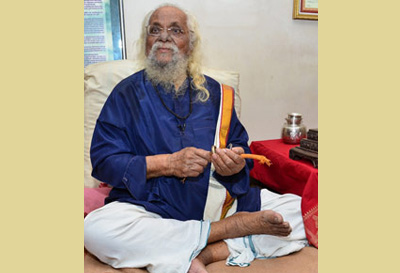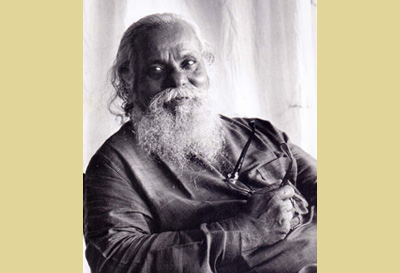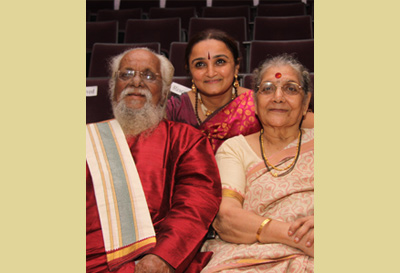Early Training in Dance:He learned Bharatanatyam under Guru Chandrashekhar Pillai. He also learned several compositions from Guru Mahalingam Pillai and Smt. Maylapur Gauri Amma. He learned Kathakali from Guru Karunakar Panikar and Kathak from Guru Ratikant Arya and Guru Sunder Prasad.
Choreography of Indian Dance-Ballets: Between 1942 and 1983 he choreographed over twenty ballets. These include- Dawn of a New Era (1942), Sita Haran (1943), Sundopsunda (1944), By 1951 (1948), Bharat Ki Kahani (1949), Rhythm of Culture (1950), Rajput Episode-Raja Rani ki Kahani (1956), Dekh Teri Bambai (1958), Discovery of India(1964) and Krishna Leela(1965).
Choreography of Children’s Ballets: Manitaichi Fajety(1947), Billi Mausi ki Fajity (1948), Snow White and the Seven Dwarfs (1958), Panchatantra (1970), Apna Haath Jagannath (1980), Durga Zhaali Gauri (1983).
Choreography for Films: Between 1950 and 1968 he choreographed dance sequences for several Hindi Films. These include: Gauna, Daag, Badshah, Vishwamitra Menaka, Hum Hindoostani, Ek Moosafir Ek Hasina, Dil Deke Dekho, Tumsa Nahin Dekha, Kale Gore, Mr. X, Dhola Maru, Raj Mukut and Jai Mahalaxmi. He also choreographed dance sequences for some regional films. These include: Postatil Mulgi (Marathi), Prem Andhla Asta (Marathi) and Sudi Guntalu(Telegu).
Tours Overseas: In 1959, he was invited to Paris to present the ballet ‘Dekh Teri Bambai’ at the invitation of Theatre de Nations, sponsored by Indian National Theatre. In 1969 he visited Romania and Hungary on a cultural tour sponsored by the Ministry of Education, Govt. of India.
Founding of Dance Institutions: In 1968 he founded ‘Thanjavur Nrityashala’ to train students in the discipline of Bharatanatyam.
Research and Choreography of Marathi Nirupanas: In 1982 his path breaking research on the Nirupanas of the Thanjavur Kings was published in the form of the ‘Thanjavur Nritya Prabandha’ by the Sahitya and Sanskriti Mandal, Maharashtra. The nirupanas of Sarfoji Maharaj II (1777-1832), a descendant of the Bhonsle family of kings, were compositions written in Marathi but set to Carnatic music. These were researched and choreographed in dance-form by Acharya Parvatikumar.
An AUTHORITY ON CLASSICAL DANCE AND SANSKRIT, she is affiliated to several universities offering her expertise as an Expert Advisor on the Academic Council and Board of Studies.
She has been invited as a scholar to universities and for international seminars, conferences like International Conference on Natyashastra, IGNCA-Varanasi; WDA, Taiwan; Century of Indian Dance, Toronto to name a few and has delivered illustrative talks on dance to a diversified audience. She has been bestowed with the honour of being an ADVISORY MEMBER AND LEADER of several institutions, councils, commissions as well as festivals
She is the renowned AUTHOR of SCHOLARLY BOOKS ON DANCE based on her profound research.Her INNOVATIVE PRESENTATION OF SHASTRA AND SAMPRADAYA, an application of Sanskrit verses in practice, has been praised as a pioneering effort. Verses from Sanskrit texts like the Abhinaya Darpanam, Natyashastra, NrityaRatnaKosa, Sangita Ratnakara and Sangita Darpanam have been transmitted into the vocabulary of dance to enhance the learning process.
As an intelligent dancer with contemporary sensitivity, with her grace, radiance and technical proficiency, she draws the viewer into the inner spaces that she paints, leaving the audience deeply touched in each of her performances and choreographies. She is a regular performer at major festivals in India and abroad. RICHLY HONOURED AND WIDELY TRAVELLED, some of Dr. Sandhya Purecha’s performances have been at top national festivals like Narmada Seva Yatra, Ekatmata Festival, Vibrant Navratri - Vibrant Gujarat, Siddhi Festival, Simhastha Kumbha Kala Utsav, Khajurao Festival, Konark Festival, Natyanjali Chidambaram, Modhera Festivals in India and internationally in Netherlands, Dubai, Moscow, London, Edinburgh, South Africa, Toronto, New York, Taiwan to name a few. Her emphasis on purity of tradition and classical technique in her solo Bharatanatyam recitals has been received with acclaim.
In addition to this, her deep understanding and infinite ability to communicate through the dance idiom has been enhanced with her indisputable expertise in shastra and stands out for its technical perfection and artistic sensibility.
Her REPERTORY GROUP is empanelled with the Indian Council for Cultural Relations (ICCR), Govt. of India and has received the Outstanding Grade by the Festival of India Cell, Ministry of Culture, Govt. of India.
In honour of her pioneering contribution in the field of dance, she received the most prestigious Sangeet Natak Akademi Award 2017 for Overall Contribution in the field of Art by the Sangeet Natak Akademi, Ministry of Culture, Govt. of India.
In recognition of her contribution to Indian dance and Sanskrit, she has been bestowed with the highest AWARDS in the educational and cultural forums by the Government of Maharashtra receiving the prestigious 'Maharashtra State Cultural Award' and 'Maharashtra Rajya Mahakavi Kalidas Sanskrit Sadhana Award'. Other honours include the 'Artistry Award', ‘Hirkani Award’, 'Lifetime Devotion to Bharata Natyam Award', 'Nritya Nivedita Title', 'Dr. Babasaheb Ambedkar Award', 'Gujarat Gaurav Puraskar' and many more.



